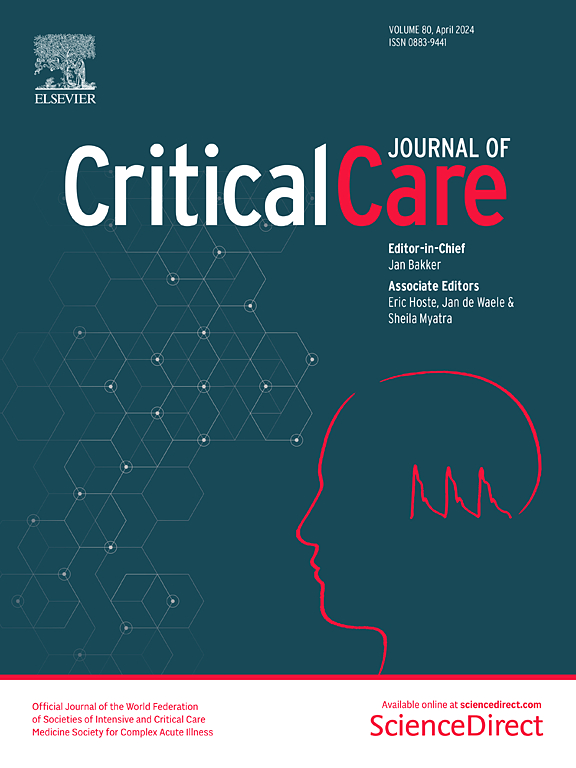Characteristics, outcomes, and complications among nonagenarian and centenarian patients admitted to the intensive care unit: a scoping review
IF 8.8
1区 医学
Q1 CRITICAL CARE MEDICINE
引用次数: 0
Abstract
Nonagenarians and centenarians are a growing and vulnerable groups of patients admitted to ICU. There is limited information on their characteristics, outcomes, and complications. We performed a scoping review of studies focused on nonagenarians and centenarians admitted to ICU. We assessed their characteristics, the presence of frailty, the presence of comorbidities, their complications, their ICU and hospital length of stay and mortality and their long-term outcomes. We assessed 36 studies, mostly retrospective, with one classified as a National Quality Registry study and another as a prospective analysis of two large multinational cohorts. The studies involved 16,859 patients with a mean age of 92.4 years and a male prevalence of 39.3%. Multiple comorbidities were present in the majority of patients. Overall, 40.7% of patients received mechanical ventilation, with a median of 36% (range: 0%–100%; IQR: 23.8%–50%). Mean duration of mechanical ventilation was 90.4 h, with a median of 84 h (range: 10–221 h; IQR: 12.25–146.5 h). Cardiovascular and renal complications were common. Mean ICU stay across studies was 5.4 days, with a median of 5 days (range: 0.9–13 days; IQR: 2.55–7.03 days). The median length of hospital stay was 12.4 days (range: 5.7–31 days; IQR: 11–17.6 days). The median hospital mortality was 25.55% (range: 0%–62.5%; IQR: 15%–35.5%). The mean six-month and 1-year mortality rates were 38.6% and 45.6%, respectively. Nonagenarians and centenarians admitted to ICU are a highly comorbid and vulnerable population who experience prolonged hospital stays and complications. However four out of five survive to hospital discharge and half are alive at one year after admission. Therefore, through judicious patient selection, ICU care can be both meaningful and beneficial. Our findings underscore the need for a standardized reporting structure for nonagenarians and centenarians admitted to the ICU to allow comparability across studies, enhanced data quality and reliability, greater research efficiency, and better identification of the unique health needs in this vulnerable patient cohort.求助全文
约1分钟内获得全文
求助全文
来源期刊

Critical Care
医学-危重病医学
CiteScore
20.60
自引率
3.30%
发文量
348
审稿时长
1.5 months
期刊介绍:
Critical Care is an esteemed international medical journal that undergoes a rigorous peer-review process to maintain its high quality standards. Its primary objective is to enhance the healthcare services offered to critically ill patients. To achieve this, the journal focuses on gathering, exchanging, disseminating, and endorsing evidence-based information that is highly relevant to intensivists. By doing so, Critical Care seeks to provide a thorough and inclusive examination of the intensive care field.
 求助内容:
求助内容: 应助结果提醒方式:
应助结果提醒方式:


